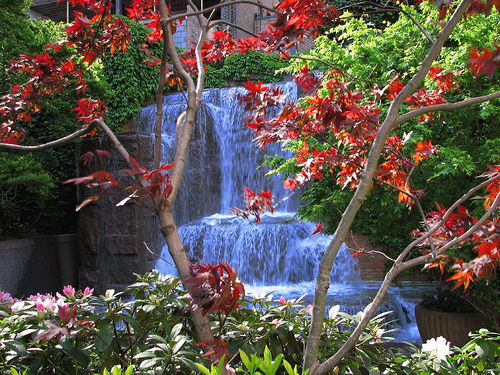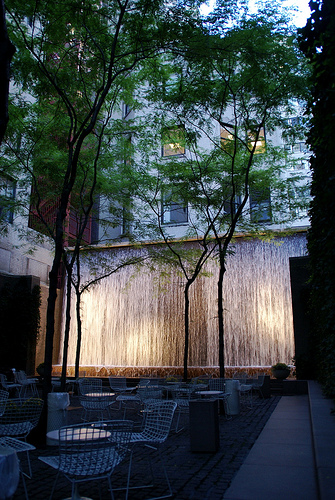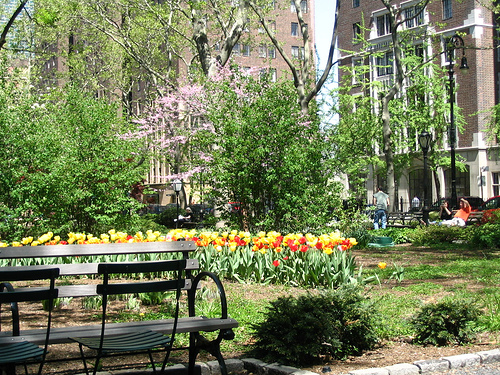Pocket parks rejuvenate cities (guest post)

Posted October 6, 2008 at 1:58PM
(I am honored today to present another guest post from Rachel Sohmer, one of my smart growth colleagues here at NRDC.)
Did you catch the New York Times article about tiny parks tucked among the concrete of Midtown Manhattan? It ran in the travel section, but we all know it's actually a testament to biophilia in one of the most urban locations on the planet. As the author writes, "even New Yorkers who work or live in Midtown do find time and green space to escape from their tall buildings and take a break," and they do it with the help of well-designed pocket parks like these:
That's Greenacre Park on E. 51st St., weighing in at only about 1/7th of an acre but named by the Project for Public Spaces (PPS) as one of the best parks in the world, a distinction it shares with Paley Park, another Midtown gem near Rockefeller Center:
Why the freakishly huge waterfall, you may ask? According to PPS, "the park's 20-foot cascading waterfall, running at 1800 gallons per minute, creates a backdrop of sound that causes the city noise to fade away" and helps create a "welcome respite from the sights and sounds of urban living."
These are just a couple of green pockets scattered throughout Midtown - check out the NYT article for a nice slideshow showing a few more examples. I'm a particular fan of Tudor City Greens, another privately maintained public park located 40 steps up from E. 42nd St.:
Speaking of the city's privately maintained public parks, the article mentions that you can usually recognize them by their "hilariously bureaucratic signs" dictating things like exactly how many trees must be planted and how many linear feet of benches must be provided. While we all love a hilarious sign, we shouldn't be so quick to gloss over the public-private partnerships that make so many city parks (see Kaid's previous reference to Bryant Park for yet another) possible in the first place.
These successes make cities more livable, which helps us maintain the densities that can lower per-capita carbon emissions through walkability and efficient transportation. While the city's approach to the issue has its critics, and NRDC would welcome policy improvements, the aspiration to do this sort of thing is laudable. We hope other cities will follow suit.
For more about pocket parks, see this paper.


